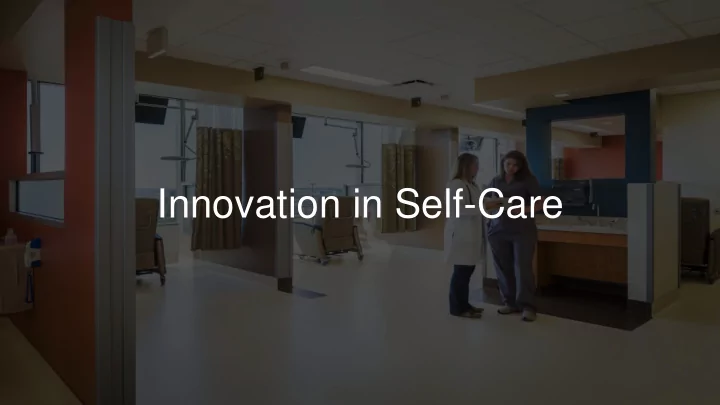

Innovation in Self-Care
S-OPAT Intro
Speakers Kavita Bhavan, MD, MHS – Associate Professor of Infectious Diseases at the UTSW, Service Chief Infectious Diseases at Parkland, and Medical Director of Outpatient Parenteral Antimicrobial Therapy Clinic and Infectious Diseases Ambulatory Clinics at Parkland About me – Dr. Bhavan’s research focus is on Self -Care, Patient Engagement, Health Disparities, Hospital Epidemiology, and Bone and Joint Infections – She obtained her Masters of Health Science degree from Johns Hopkins School of Public Health and MD from Penn State University
Speakers Norman S. Mang, PharmD, BCPS, LSS-GB – Clinical Pharmacy Specialist, Infectious Diseases About me – Joined Parkland in 2015 as dedicated ID-OPAT pharmacist – Lean Six Sigma Green Belt and Board Certified in Pharmacotherapy – 2 years of post-graduate residency specializing in infectious diseases – Doctorate of Pharmacy degree from Belmont University in Nashville, TN
The Pieces of S-OPAT Quality Population Patient Patient Patient Value Based Improvement Health Centered Safety Engagement Care Care Patient Multidisciplinary Continuum of Transition of IT Innovation Stewardship Empowerment Team Care Care
Definition “S - OPAT” refers to the provision of IV antibiotic therapy on at least 2 consecutive days without intervening hospitalization Goals – Allow patients to complete treatment safely and effectively in the comfort of home – Avoid the inconveniences, complications, and expense of hospitalization
Models OPAT indicated Medically stable OPAT contraindicated Patient presents Select appropriate with infection that setting based on requires IV availability and antimicrobial therapy patient needs Hospitalize Medically unstable OPAT indicated (patient stabilized)
Models of OPAT in the U.S. $$
Parkland Patient 46 year old African American male Motor vehicle accident Post-operative infection of prosthesis Required 6 weeks of IV antibiotics No illicit drug use history Currently uninsured
Project Need Patients with infections requiring long term antibiotics typically receive concentrated diagnosis and prescription services in the first several days- then remain in the hospital with low intensity needs/antimicrobial infusions While insured patients may be discharged early to home with nursing assistance or to a lower cost nursing facility to complete treatment, unfunded patients usually remain in hospital This causes a burden on safety-net hospitals and decreases availability of acute beds for patients presenting with more severe needs
Options What if patients cannot afford these options? Burden on safety-net hospitals Burden on patients Intensity of services Hospital days 3 42
The S-OPAT Program
Intervention Developed program in 2009 as an alternative for uninsured patients to complete long-term antibiotic therapy at home comparable to services received in traditional settings Patients undergo bedside teaching and competency assessment prior to discharge from hospital Transitioned from the hospital into a dedicated post-discharge OPAT clinic, and followed weekly by nurses for PICC line care and at fixed intervals by physicians to assess clinical response to therapy
Methodology Dedicated multidisciplinary OPAT team: Physician, Pharmacist, Nursing, Care Management Effective multilingual patient education material at the 4 th grade health literacy level and employ the “teach back method” for bedside teaching Standardized core competency tools to test and record patient’s ability to self - administer IV antibiotics safely at home 2016 Gage Award Reception
Patient Safety
Multidisciplinary Team
OPAT Consult Order Set ID Pharmacist Case Manager Case Manager Vascular Access Team Vascular OPAT Access Team Nurse Dispensing Pharmacy Dispensing Pharmacy OPAT Clinic
Pharmacist: Clinical Assessment Tool
Case Management: Eligibility Screening Tool
Bedside Teaching
Infusion by Gravity
Manual Documentation of Patient Teaching
Inefficient Documentation Process
Electronic Teaching Tool
Printed Education Materials
OPAT Demonstration Video
On-demand Educational Videos
Consumerization of Healthcare Information
OPAT Discharge Order Set
Required Competency Items
Consult Details
Auto-calculating DME Requirements
Value-driven Stewardship in Transitions of Care Daptomycin Monthly Expenditures $100,000 $90,000 $80,000 $70,000 $60,000 Pre-Intervention $50,000 Post-Intervention $85,905 $40,000 $60,900 $30,000 $20,000 $10,000 $0
Follow-Up in the S-OPAT Clinic
Clinic Follow-up Decision Support Tool Priority • Time Critical: 4 – 7 days • Next Available: 7 – 10 days Home Services • S-OPAT: 4 – 10 days • H-OPAT: 10 – 14 days Antibiotic Selection • Determines laboratory monitoring ID Consult • ID attending assignment
Continuity of Care Safeguards
Measuring Performance Determine whether indigent, often poorly educated and mostly non- English-speaking patients S-OPAT program can administer IV antibiotics at home as safely and effectively as traditionally accepted models of outpatient care available to patients with funding (H-OPAT)
Publications 30-day readmission rate 47% lower for S-OPAT patients compared to H-OPAT standard of care 27,666 inpatient days avoided $40,000,000 saved for hospital Improved resource utilization by freeing beds for acutely ill
Publications Achieving the Triple Aim Through Disruptive Innovations In Self-Care – Bhavan KP, Agrawal D, Cerise F.JAMA. 2016 Nov 22;316(20):2081-2082. Self- Administered Outpatient Antimicrobial Infusion by Uninsured Patients Discharged from a Safety Net Hospital: A Propensity Score Balanced Retrospective Cohort Study – Bhavan KP, Brown LS, Haley RW. PLoS Med. 2015 Dec 15;12(12):e1001922.
Patient Perspective Ability to return to work earlier Ability to care for dependents at home Avoid high cost of hospitalization Ability to complete therapy safely in the comfort of home Minimal interruption of daily life
Patient Empowerment Patient #1 “Wanted independence to give myself antibiotics without having to follow the home health nurse schedule” Patient #2 “Wanted to regain control in my life”
Future Areas of Research Collateral benefits of effective patient engagement through S-OPAT model – Patient activation, e.g. PAM scores – Medication adherence, e.g. PDC scores – Disease markers, e.g. diabetes & HgbA1c; hypertension & BPs Collaborate with Institute for Healthcare Improvement Center for Innovations to advance self-care initiatives nationally
Lessons Learned S-OPAT model delivers safe and effective care outside of the hospital Multi-disciplinary team approach with effective use of order set in EMR has been critical to successful implementation of this transition of care model Physician Perception vs. Patients Ability to self administer IV therapy IDSA Clinical Practice Innovation Award (2017) TSHP Innovative Collaborative Practice Award (2016) Gage Award for Outstanding Achievements in Quality (2016) Leveraging HIT empowers patients to be engaged in their own care
Recommend
More recommend